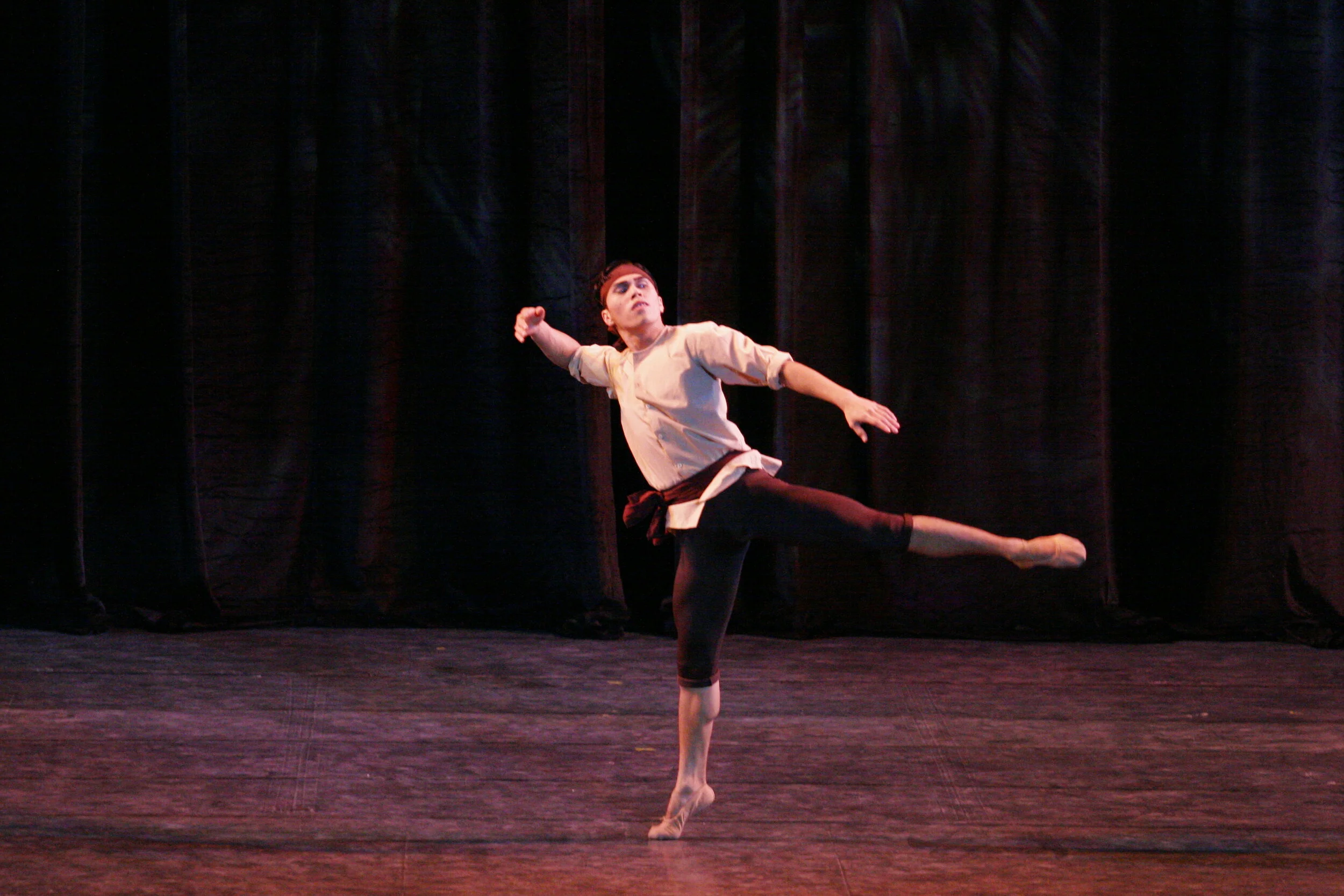Choreography in Focus: Gomburza by Ernest Mandap
Gerardo Francisco, Alvin Santos and Niño Guevarra are blindfolded as they dance Ernest Mandap’s Gomburza, about the three Filipino priests whose execution in 1872 helped spark social reform. Photo by Ocs Alvarez
In Philippine history, the triumvirate known as “Gomburza” has become synonymous to heroism and social change. Gomburza stands for Mariano Gómez, José Burgos, and Jacinto Zamora, three Catholic priests falsely accused of plotting against Spanish authorities following the 1872 Cavite mutiny and who were ordered executed by garrote on February 17, 1872 in Bagumbayan (now Rizal Park)
The tragic event is regarded as having contributed significantly to shaping Filipino nationalism and the call for reforms that moved even Jose Rizal – who himself would be martyred in 1896 – to dedicate his second novel, El Filibusterismo, to the three priests.
In his choreography called Gomburza, Ernest Mandap wanted to pay tribute to the priests not just by extolling their heroism but also by touching on their humanity and the rawness of their emotions at a most crucial time. The dance piece zeroes in on the moments before their execution.
An electronic-lab-experimental sound accompanies the torture scene to further stir the audience’s emotions. Photo by Ocs Alvarez
“I tried to imagine how to be in their skin, of what a human would feel in that particular situation – fear, anger, revolt, anxiety, hope, brotherhood,” Mandap notes.
Even with his other pieces created for Ballet Manila, the choreographer uses many qualities of movements and even non-dance movements in Gomburza. “Every step has a sense, an emotion, on why you do that movement or projection. I love when a dancer is engaged and is transparent on what he does – telling a story, an emotion, reincarnating someone or interpreting your fantasies or even your dreams. Each dancer is free to find their place to stay fully in the theme of the piece.”
What heightens the drama in Gomburza is that the dancers are blindfolded, so that they have to be sensitive and mindful to be able to interpret the piece in harmony with one another. In the part simulating the torture of the priests, Mandap opted to use an electronic-lab-experimental sound to further stir the audience’s feelings. The final pose he chose was inspired by a statue that paid homage to the martyred priests.
The final pose Ernest Mandap chose for Gomburza was inspired by a statue that paid homage to the martyred priests. Photo by Ocs Alvarez
Gomburza premiered in Halo-Halo Special, Ballet Manila’s season-opener in 2009, alongside other new and original choreographies by Augustus “Bam” Damian and People’s Artist of Russia Sergey Vikulov.
Then soloists Gerardo Francisco, Vhin Santos and Niño Guevarra were tasked to channel the struggles that the priests must have grappled with – all in a few minutes of dance. “I never told them to be the priests. I just guided them on the choreography, the qualities, and also to put emotions and sense in each movement. Anyway, what’s the use to have pretty movements if there's no sense?”
The France-based Mandap also choreographed Reve, El Sol and Mis Amores for Ballet Manila. Each one has its own distinctive traits, but Gomburza – since it was inspired by real people, and heroes at that – posed a particular challenge for him that he was eager to explore. “I did Gomburza to somehow reincarnate their final moments, the atmosphere and specially to imagine their emotions.”






